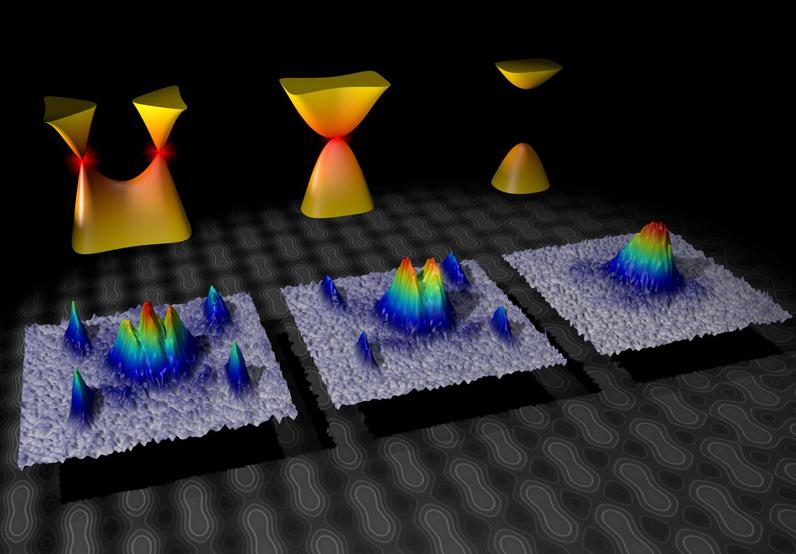
Tilman Esslinger, Professor at the Institute of Quantum Electronics, ETH Zurich, and his team loaded ultracold potassium atoms into a special lattice structure made of laser light: the researchers used a set of orthogonal and precisely positioned laser beams to create a variety of two-dimensional light field geometries, including the honeycomb structure of graphene.
In the experiment they cooled several hundred thousand potassium atoms inside a vacuum chamber to temperatures just above absolute zero, thereby bringing the atoms to rest. Then, they place the optical lattice over the cloud of atoms.
Once trapped in the optical lattice, the potassium atoms behave like electrons in the crystal structure of graphene. By accelerating the atoms with a magnetic field gradient, the researchers could identify Dirac points in the optical lattice. Near a Dirac point the atoms behave like massless particles — just as the electrons in graphene — and they can move from the valance to the conduction band since the band gap vanishes.






